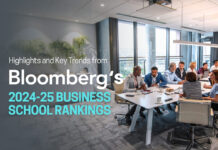By Chris Nichols, Philippa Hardman and Michael Chaskalson
Earlier articles in this series have introduced Team Mindfulness using the AIM model and explored how the application of the model in practice addresses important areas of organisational life. This article continues the work by exploring a question that will concern us all.
It seems from many corporate statements that we are not all going back to the office any time soon. Many organisations have announced plans for fully remote working, others have announced radical flexibility plans.
The reality is that remote and home working has proved a highly differentiated experience: not available for all, wonderful for some, a disaster for others. If it is now “wired in” for many of us as part of our future way of working, we must ask how we can do it well, to become and remain vibrant, participative and healthy human communities.
We think that mindful practice using the AIM approach can be powerful, and we convened an informal “pop up” online research event to explore the question. This article summarises what we found.
The pandemic brought new ways of working to many of us, accelerating digitisation and flexible forms of working for many in organisational life. Recent research suggests that the new ways of working are here to stay. “The virus has broken through cultural and technological barriers that prevented remote working in the past, setting in motion a structural shift in where work takes place” says a recent McKinsey report. Statements by some large corporations have suggested a wholesale shift towards hybrid and flexible working with between 60% and 80% of all companies reporting an intention to keep some of this in their new normal offer.
Many people report positive outcomes from this way of working. A World Economic Forum report on remote working found that 90% of staff reported higher trust in their employer, and 88% reported a more satisfactory working relationship as a result of working from home.
What’s the problem?
The pandemic brought new ways of working to many of us, accelerating digitisation and flexible forms of working for many in organisational life. Recent research suggests that the new ways of working are here to stay. “The virus has broken through cultural and technological barriers that prevented remote working in the past, setting in motion a structural shift in where work takes place” says a recent McKinsey report. Statements by some large corporations have suggested a wholesale shift towards hybrid and flexible working with between 60% and 80% of all companies reporting an intention to keep some of this in their new normal offer.
Many people report positive outcomes from this way of working. A World Economic Forum report on remote working found that 90% of staff reported higher trust in their employer, and 88% reported a more satisfactory working relationship as a result of working from home.

It is odd then that we still find a huge pull towards meeting in person and doing “in the room” work in exactly the groups these surveys reported to benefit most from the new ways of working.
Take these two examples from our consulting practice:
Snapshot one. We were contacted by an existing client (a large global corporate) about helping to design a late summer event for 200 global leaders. They were very clear – assume the event will be a physical gathering. The message also asked for a “reserve option” of holding a shorter virtual event in case a physical event couldn’t happen. This is interesting. Why would you even consider flying leaders around the world, with all the costs and risks involved? Clearly, virtual is seen as “second best”. Why?
Snapshot two. We do some work that involves workshops where people come together from different European regions. The groups have not been able to meet for some time, owing to regional health protection rules. Some have moved their work on-line and have done very productive and creative work. But one group has continued to defer meeting, putting off their next work together until they can meet physically because of their exhaustion and frustration with virtual working.
What could be done so that this isn’t the case?
In many ways this is an issue that is only just emerging. These new ways of working are still in formation, and people are giving each other lots of support to be working in conditions that are not ideal for them. But with organisations starting to make statements about the future pattern of how they plan to work, we can expect these patterns to become more permanent, and with that so will the consequences.
What do we all need to do to make sure the new ways of working work well for as many people as possible?
Our “pop-up” research event brought 60-70 people together to explore this issue and we applied the AIM model to that research. This article shares some of the findings as we saw that the applying AIM unearthed some very useful insights.
A reminder of the AIM approach
We don’t assume that everyone has read the earlier articles in this series, so for anyone who needs it here is a summary of the AIM model.
These AIM foundations of Allowing, Inquiry and Meta-awareness were first set out in earlier research discussed in an article by Michael Chaskalson and Megan Reitz.
Allowing is the practice of recognising reality for what it is. We all spend so much our time living in a “what if” world. When we are stuck in an attitude of wishing things weren’t like this or an attitude of denial, there is very little choice available to us. It’s fruitless to spend time wishing the world were somehow different. When you’re able to allow things to be as they actually then possibilities emerge.
Inquiry is the practice of disciplined interest in opening things up. So much of creating the future involves moving beyond the ways of seeing and acting that have brought us to the problem we’re in. The ability to address the problem creatively demands that we see the world another way. We can only see another way if we are willing to look through fresh lenses. This is where nurturing a team’s ability to inquire really matters.
Meta-awareness is the ability to look at the team from an ‘outsider’ perspective and see the behaviour of the team as it is happening. It is like looking down at the swirling patterns of people moving around a busy railway station from a high up balcony. The team learns to see itself in action. It sees what is going on its own collective behaviour and its own patterns – what it is doing while it is actually doing it.
As we discussed in our previous article, the three fundamentals of AIM – allowing, inquiry and meta-awareness – can all be learned and nourished. Let’s now see how they work in the context of the challenge of creating a more human organisation.

Applying the AIM model to this problem
In our research event, the first conversation we facilitated focused on what people had noticed about adapting to virtual work. We were surprised by the heartfelt energy behind some of the observations that emerged. Virtual working can lead to powerful emotional reactions about fairness and humanity. The first step in creating good conditions is focused on allowing peoples’ realities to be what they are.
We need to allow that there are significant differences in people’s circumstances and experiences. For example, many people noticed some great benefits of virtual working, such as the ability to include people far away who would never normally have been thought of for the team purely because of distance. One consultant spoke about the power of picking exactly the right team to think about a client situation, with no limitations of geography. Allowing for the potential to transcend old boundaries in order to seize the potential was a potent message: by doing this leaders stop seeing virtual working as a “diluted substitute” for face-to-face working, instead seeing it as a powerful new form of alchemy. But this was matched by some difficulties that can exist in this space.
People have different circumstances and needs, and employers need to respect this reality as a starting point. Some people are affluent and live in bigger houses with purpose built workspaces. This is a very different reality from one where colleagues, often younger, are in a shared house or working on a laptop on their bed. Expect people to have different realities and different reactions and needs, was one fundamental message.
This leads to another powerful insight: we may need to allow for very different ways of being professional. Our research group members were clear that you may need to change your expectations about how people look and act. Allow people to turn up as they are – remote work may include cats, children, eating, and people at the door. It’s no more useful being irritated at this than it is useful to be irritated about the weather.
The next block of observations was about being humans with bodies. It sounds pretty obvious, but it is easy to forget that the figures in the tiny boxes on screen are people with physical needs. Allowing for the diversity of these needs really matters. People seem to find continuous virtual work very demanding. So there is a need to allow for fluctuating energy – and to plan for plenty of comfort breaks in managed way. Some people in your team may have concerns about mobility or other limitations that impact on them with lengthy screen time: backs, hips, and eyes all got specific mentions in the research. You will need to know the limits of the capacity of team members to work in this way and allow for these.
It is vital to allow for the human need to build bonds by non-work chatter and exchange. Unless you design for connection, you don’t get it. The virtual world can lack a space in which relationships get built “for free”. There is no coffee-break or water-cooler connection. Creating drop-in coffee rooms in events doesn’t do it. If this matters to you (and it should), you have to work harder to build it in. Encouraging one-to-one walk and talk calls, perhaps outside in the park, was one common practice that we heard about. So were shared artistic experiences where the act of doing an artistic activity together seems to lead to a different tone of conversation than a normal Zoom or teams call – there’s a link to one of our blogs about the experience of “zen-doodling” here.
A final group of observations was about the need to accept that not all conversations are the same. There are different kinds of conversation and it is important to find a way to allow them to be different. It is harder to be a critical friend in a large zoom meeting than in a large room. Critical comments can land very flat without the body language and tone of a quiet word in the margins of a meeting. You may need to find a way to allow for the necessary critical conversations by signalling the supportive intention more clearly. “Making up” is hard in a zoom gathering – this is another case where allowing for a different form is useful, and the one-to-one walk and talk also got plaudits here.
Above all the deepest message was to allow for learning: none of us are experts in creating brilliant virtual organisations yet. We need to allow that we know less than we think we do – about the platforms we use and the practices we use on them. We need to keep ourselves open and interested in signs that things are going unexpectedly well, or oddly differently, and be ready to learn from that – often as it is happening. The skills of reflection have never been more needed: before, during and after, allow time for reflection and learning.
This then opens the way for Inquiring – the act of asking better questions about our virtual experiences can be a catalyst for deeply radical change. Many of the areas above lead naturally to themes to be curious about. Always being interested, always looking for new insight, is a success strategy in uncharted territory like this.
Some of the themes to be curious about leapt out of our research:
- What works for us? After a few months, is it still working, what else could we do?
- Are we all being heard? What exactly are our practices and ways of working helping or hindering?
- What counts as professional practice for us here?
- What are we noticing about power and how it plays out in the virtual world? How do we include, and perhaps inadvertently exclude, people? How can we improve inclusion and make it work well for us?
- How do we make our diversity and inclusion intentions really leap into life here?
- How are we managing fairness?
- What do our bodies need? What is the place of space and movement in our virtual work?
- How good are we at boundaries? How are we at managing arrivals and departures? What’s needed to support good work for us in our team, given our actual needs?
- How do we have different types of conversations? Do we need to design more carefully when we need to be efficient and disciplined? Creative? Have difficult conversations?
- How can we allow genuine room for uncertainty and exploring in virtual work?
- Do we always have to do it all together? How can we use streams of work and asynchronous working to suit people better and get the outcomes we need?
There are, of course, many more questions and areas for exploration. This may seem daunting but that’s what makes this so important. We are all going to weave our own success from the degree to which we do this well.
As you go, keep your eye on how you are doing it. This is where meta-awareness comes in – paying attention to how you are thinking and acting while you are doing it.
We are all human. While we are doing this work, the joining in and the inquiring, we will be having experiences that are worth noticing. Our own reactions, physical and emotional, to virtual work and new working patterns are useful data. Noticing what we are experiencing and using that as data, rather than reacting to it as truth, is gold dust. Pay attention to your own thoughts and feelings about virtual or hybrid processes, as you engage in them, and invite others to voice theirs as well. That allows the processes that emerge to be rooted in lived experience, not some abstract idea of what might work well.
Through continued practice to what is happening, you will notice more and more finely the patterns of experiences, for yourself and with your team. Noticing your routines, noticing the language and imagery you tend to rely on. When you are trying to do something new, or to extract learning from a new situation, noticing how it is: what’s easy, what’s difficult, what evokes anxiety, what do you resist doing?
There is an infinity of things to notice. Don’t let that stress you, none of us can notice it all. But do try to spot what you do notice and get into the practice of comparing that to the experience and perception of others. Over time this will both improve your performance together and develop your shared ability for team mindfulness – particularly your shared curiosity, and your collective capacity to notice your thinking-in-action. It’s a form of team risk-management: building the peer-to-peer ability to notice traps and stuck patterns while they are happening, so that your ability to see “what is” becomes ever strengthened, and your capacity to create new frontiers together increases as you develop the ability to move beyond familiar ways of acting and reacting. In a shifting world, there is no greater asset to have.
A few closing words
It is certainly both a challenge and a privilege to be alive at this time of change, when whole new ways of working and organising are being created. We are at a frontier of organisational form and new technologies, leading to new ways of working and all that it brings in terms of personal choice and potential cost and risk. For anyone interested in developing their leadership through a path of continuous learning, the frontier has never been more enticing. There is so much possibility available to breathe new ways of working into life that are good for each of us, for our organisations and for the planet. We need to take this opportunity and make it work for us. And as you step into this work, we hope that the practices and approaches of Team Mindfulness and the AIM methodology will help you and your teams to flourish for the good of all.
About the Authors

Chris Nichols is co-founder of the specialist systems change consulting firm GameShift, Over the past three decades he has worked in public service, consulting, finance and academia. His work brings creative provocation and spiritual practice to the boardroom in service of human and more than human flourishing.

Philippa Hardman is co-founder with Chris Nichols of GameShift. She is a chartered accountant by background, with 25 years consulting experience including Coopers & Lybrand (now PwC) and PA Consulting. She was previously co-leader of the strategy engagement group and Director of Ashridge Consulting.

Michael Chaskalson is a Professor of Practice at Ashridge Executive Education at Hult International Business School and associate at The Møller Institute at Churchill College in the University of Cambridge. A pioneer in the application of mindfulness to leadership and in the workplace, he is founding Director of Mindfulness Works Ltd. and a partner at GameShift.


































